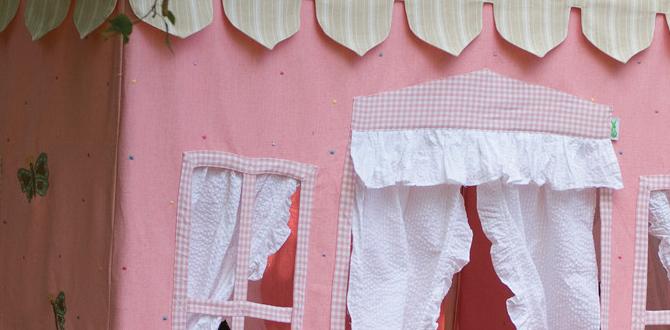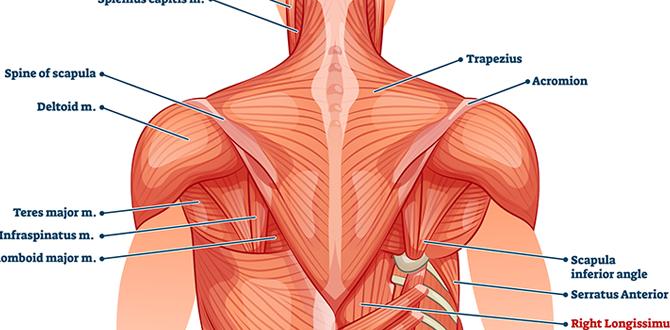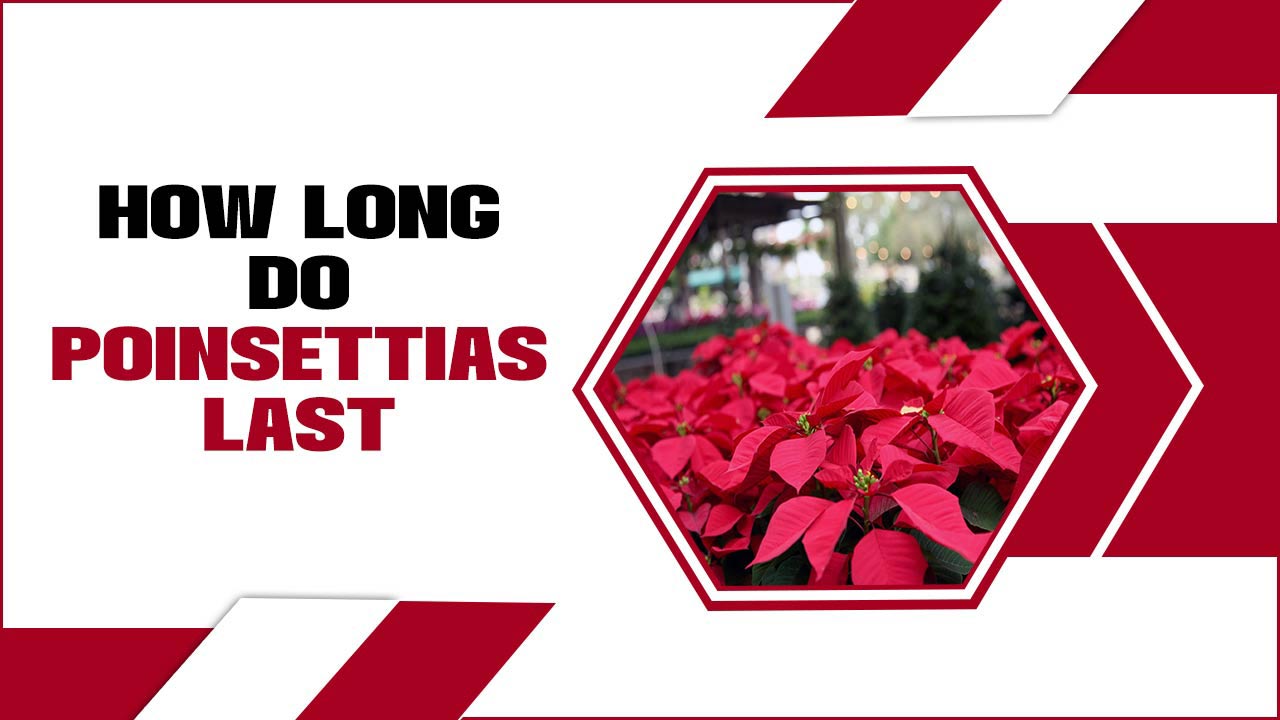Have you ever wondered if sawdust can help your garden grow? Many people think of sawdust as just a byproduct of cutting wood. But it has much more to offer. Using sawdust in gardens could change how we grow plants.
Imagine turning a pile of leftover wood bits into the perfect garden boost. It sounds surprising, right? Sawdust can improve the soil, help plants, and even reduce weeds. That’s why many gardeners are curious about this unusual material.
Are you looking for ways to make your garden thrive? Let’s explore if sawdust is good for gardens and how to use it wisely. You might find that this simple material offers great benefits!
Is Sawdust Good For Gardens? Exploring Its Benefits And Uses
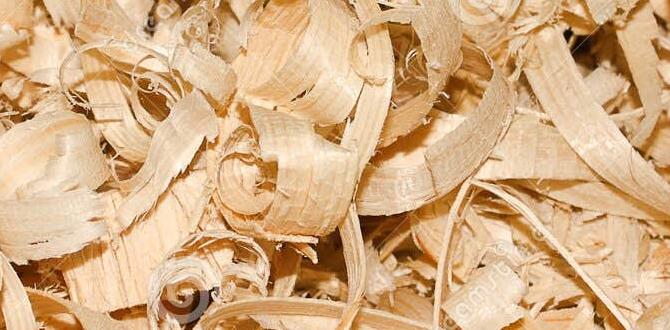
Is Sawdust Good for Gardens?
Sawdust can be a gardener’s secret weapon! It helps improve soil structure and retains moisture. Plus, it acts as a natural mulch, keeping weeds at bay. However, be careful! Too much sawdust can soak up nutrients. Imagine turning your garden scraps into nutrient-rich soil. It’s a simple way to recycle. Did you know that sawdust from untreated wood is safe for plants? Finding ways to enhance your garden with sawdust might just inspire your green thumb!Understanding Sawdust as a Gardening Material
Definition and composition of sawdust. Common sources of sawdust in gardening.Sawdust is simply tiny wood particles left after cutting or shaping wood. It’s like a wood smoothie, but without the fancy blender! You can find sawdust in many places, especially from lumber yards, carpentry shops, and even when slicing up your favorite wooden furniture. Believe it or not, you might find sawdust that comes from softwoods like pine or hardwoods like oak. Each adds its unique magic to your garden, but choose wisely to avoid bugs who might want to join the party!
| Source | Type |
|---|---|
| Lumber Yards | Softwood |
| Carpentry Shops | Hardwood |
| DIY Projects | Varies |
Benefits of Using Sawdust in Gardens
Soil enhancement and moisture retention. Nutrient availability and decomposition process.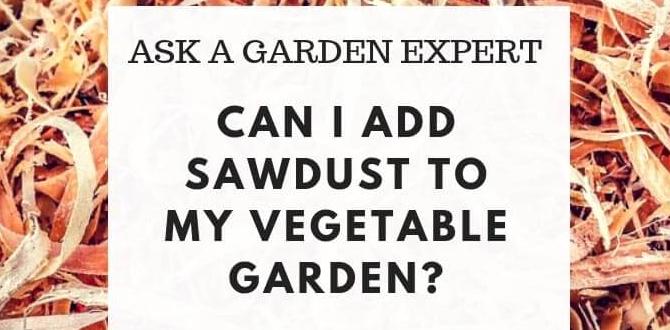
Using sawdust in gardens has some nifty perks! It helps enhance soil by adding organic matter. This makes the soil healthier for plants. Want to keep that moisture in? Sawdust does a great job holding onto water. It’s like a tiny sponge for your garden! Plus, as it breaks down, it releases nutrients like a friendly gardener. Just be careful not to use too much—your plants might not like a sawdust buffet!
| Benefit | Explanation |
|---|---|
| Soil Enhancement | Improves soil quality and supports plant growth. |
| Moisture Retention | Holds water, keeping soil moist for longer. |
| Nutrient Availability | Releases essential nutrients during decomposition. |
Drawbacks and Considerations
Potential nitrogen deficiency issues. Risk of introducing toxins and pathogens.
Using sawdust in gardens can have some downsides. It may cause nitrogen deficiency. This happens because sawdust takes up nitrogen as it decomposes. If soil lacks nitrogen, plants may not grow well. Also, sawdust could introduce toxins or pathogens from the wood. These can harm plants or the garden’s ecosystem.
- Watch for yellowing leaves, a sign of nitrogen deficiency.
- Ensure sawdust is from clean, untreated wood.
- Test soil regularly to maintain healthy balance.
Can sawdust harm my garden?
Yes, sawdust can harm your garden if not used carefully. It can cause nitrogen deficiency and might introduce harmful pathogens or toxins.
How to Properly Use Sawdust in Your Garden
Recommended sawdust types and sourcing tips. Application methods and best practices.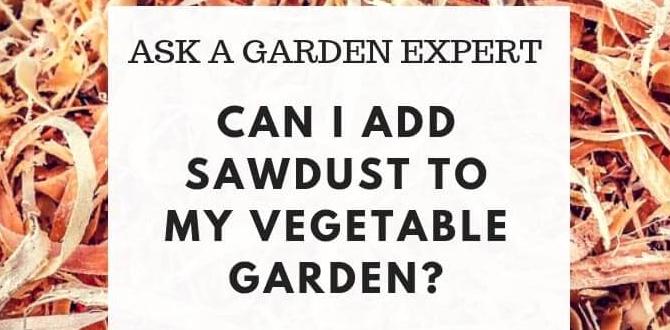
Using sawdust in your garden can be smart, but you need to choose wisely. The best types include hardwood sawdust, which is like the king of gardens, and pine sawdust, a loyal sidekick. Always grab sawdust from untreated wood. Avoid any that smells funny—no one wants their garden to smell like a bad fish market!
| Type of Sawdust | Best Use |
|---|---|
| Hardwood | Great for mulching. |
| Pine | Good for retaining moisture. |
Sprinkle it around plants for a warm hug or mix it into the soil to help with drainage. Remember, balance is key! Too much of a good thing can turn your plants into confused, cranky veggies.
Alternatives to Sawdust for Garden Use
Comparison with other mulching materials. Organic compost and wood chips as alternatives.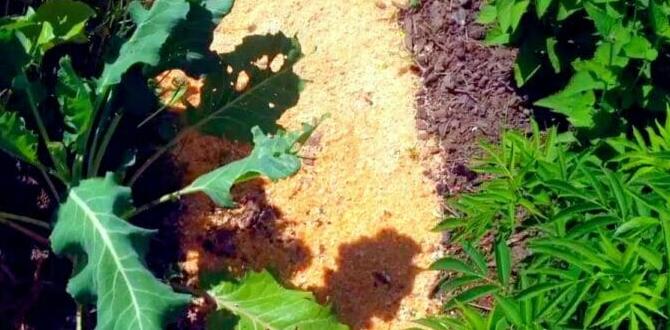
Many gardeners look for good options besides sawdust. Two popular alternatives are organic compost and wood chips. Both materials bring benefits to your garden.
- Organic Compost: Enriches soil with nutrients. It helps plants grow and retain moisture.
- Wood Chips: They are great for suppressing weeds. They also break down slowly, adding organic matter to the soil.
Each alternative has its own advantages. You can choose based on what your garden needs most.
What are the benefits of wood chips compared to sawdust?
Wood chips provide better drainage, can last longer, and protect your plants from soil erosion better than sawdust. They also allow air to circulate in the soil.
Expert Opinions and Studies on Sawdust in Gardening
Research findings on nutrient dynamics. Case studies from experienced gardeners.Many experts say that sawdust can be a great addition to gardens. Research shows it can improve nutrient balance in the soil. One study found sawdust helps microbes break down organic matter, making nutrients more available to plants. Experienced gardeners report positive results, claiming it even keeps weeds away. Funny enough, some say sawdust is like a garden’s cozy blanket—keeping everything comfy! Just remember to mix it well; nobody likes a lumpy garden bed!
| Study Type | Findings |
|---|---|
| Research Study | Sawdust enhances nutrient dynamics. |
| Case Study | Experienced gardeners report healthier plants. |
Practical Tips for Gardening with Sawdust
Dos and don’ts of incorporating sawdust. Seasonal considerations and maintenance practices.
Using sawdust in your garden can be a clever way to boost your soil, but you need to play it right. First, remember to mix it with other materials. Too much sawdust can suck up nitrogen, making plants sad. Check the weather too! In hot months, sawdust can dry out soil, while in rainy seasons, it can help hold moisture. Now, here’s a funny tip: if your plants start to complain, give them some fertilizer!
| Dos | Don’ts |
|---|---|
| Mix sawdust with compost | Don’t use it alone |
| Use it to suppress weeds | Avoid using it around very young plants |
| Test soil moisture regularly | Don’t let it get too dry or too wet |
Conclusion
In summary, sawdust can be great for gardens. It improves soil structure and retains moisture. You should use it wisely, mixing it with other materials. Remember to check for chemicals in sawdust, as they can harm plants. If you want a healthier garden, consider adding sawdust to your compost. Keep learning about gardening for even better results!FAQs
Certainly! Here Are Five Related Questions On The Topic Of Sawdust In Gardens:Sawdust can be helpful in gardens. It works like mulch, keeping the soil moist and cool. You can also use it to improve soil quality. Just remember not to add too much, or it might take away important nutrients. Always mix it with other materials for the best results!
Sure! Please provide me with the question you’d like answered.
What Are The Benefits Of Using Sawdust As A Mulch In Garden Beds?Using sawdust as a mulch in garden beds has many benefits. First, it helps keep the soil moist by stopping water from evaporating. Second, it stops weeds from growing, so your plants have more room. Sawdust also breaks down over time, adding nutrients to the soil. Plus, it looks nice and makes your garden neat!
Can Sawdust Improve Soil Fertility, And If So, How?Yes, sawdust can improve soil fertility! When you add sawdust to the soil, it breaks down over time. As it breaks down, it adds nutrients that plants need to grow. It also helps the soil hold water better. This makes the soil healthier for plants.
Are There Any Types Of Wood Sawdust That Should Be Avoided In Gardens?Yes, some wood sawdust can be risky for gardens. You should avoid sawdust from treated wood and plywood because they have chemicals that can harm plants. Cedar sawdust can also be tricky since it may prevent other plants from growing. It’s best to use sawdust from untreated, natural wood. Always check where the sawdust comes from before using it!
How Can Sawdust Affect Soil Ph Levels And The Growth Of Plants?Sawdust can change the soil’s pH level, which is how acidic or basic the soil is. When you add sawdust, it can make the soil more acidic over time. This can hurt some plants because they prefer certain pH levels to grow well. If the soil becomes too acidic, plants might not grow as big or as healthy.
What Is The Best Way To Incorporate Sawdust Into Garden Soil To Prevent Potential Negative Effects?To use sawdust in your garden, mix it with soil carefully. First, let the sawdust age for a few months. This helps prevent the soil from becoming too compact. Add other things like leaves or compost to keep the soil healthy. Always keep an eye on the plants to make sure they are happy!



